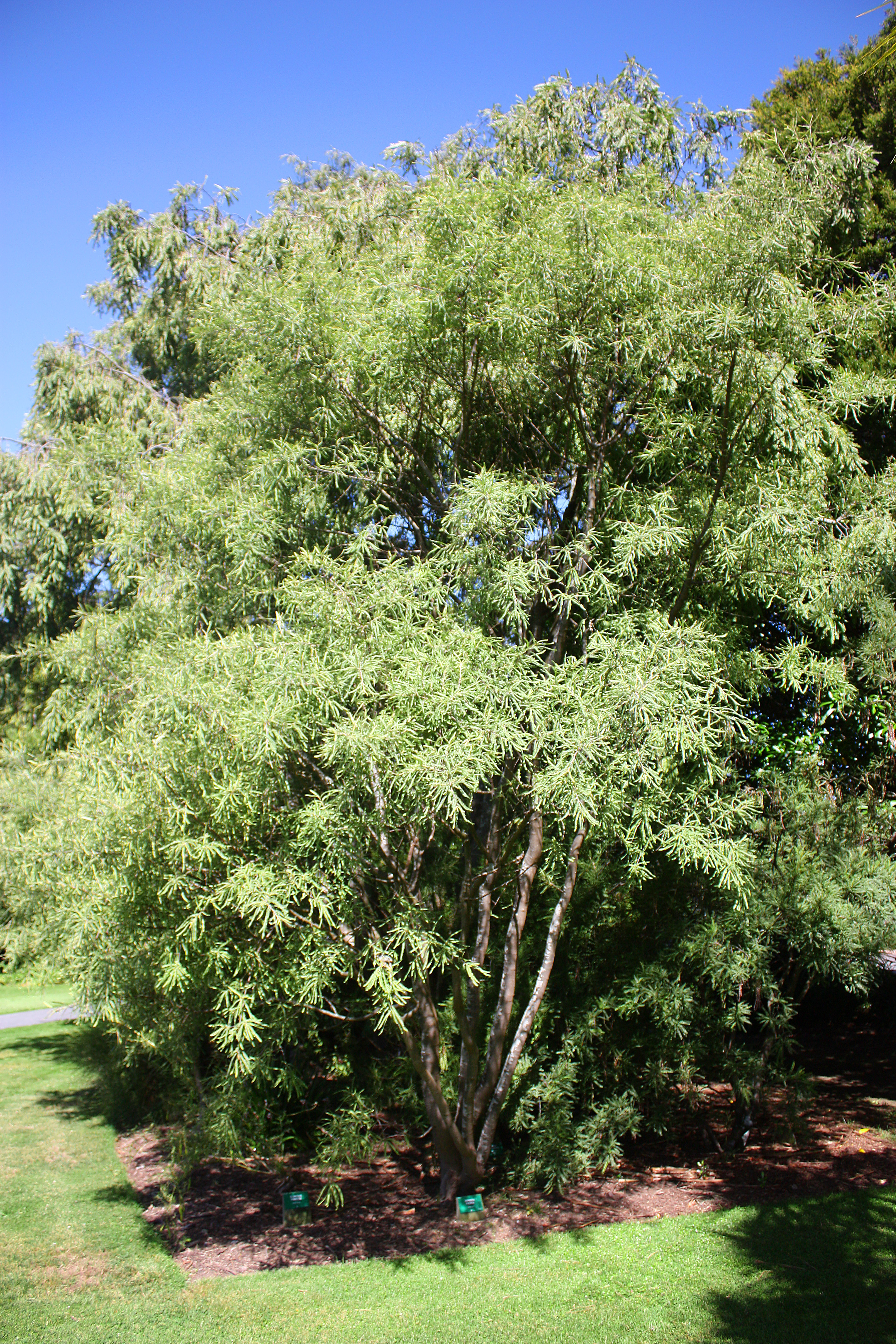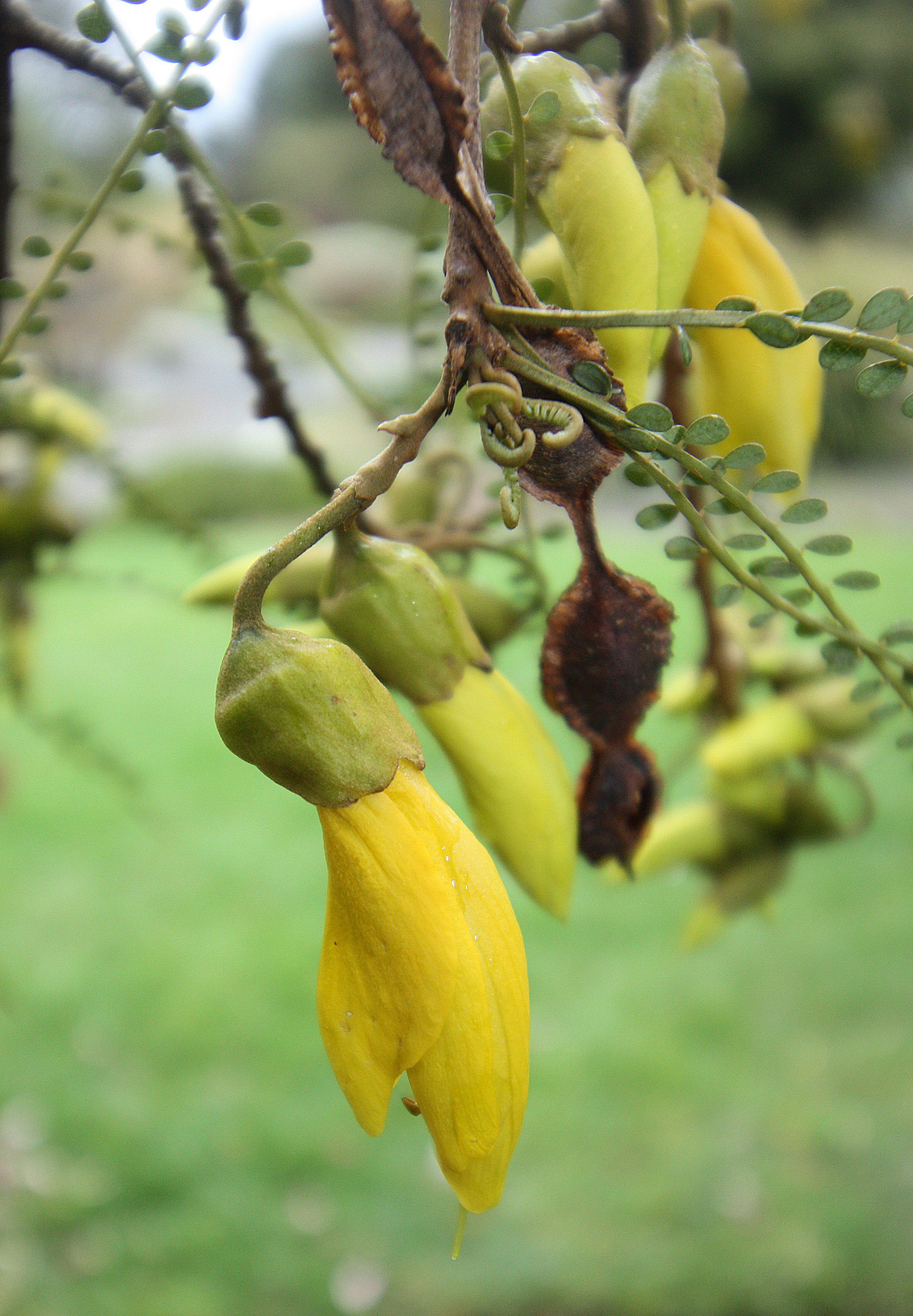|
Kōwhai
Kōwhai ( or ) are small woody legume trees within the genus ''Sophora'' in the family Fabaceae that are native to New Zealand. There are eight species, with ''Sophora microphylla'' and '' S. tetraptera'' being the most recognised as large trees. Their natural habitat is beside streams and on the edges of forest, in lowland or mountain open areas. Kōwhai trees grow throughout the country and are a common feature in New Zealand gardens. Outside of New Zealand, kōwhai tend to be restricted to mild temperate maritime climates. The blooms of the kōwhai are widely regarded as being New Zealand's unofficial national flower.Kōwhai: Native plants (doc.govt.nz) As such, it is often incorporated as a visual shorthand for the country, such as in Meghan Markle's wedding veil which included distinctive flora representing all Commonwealth nations. The Māori word ''kōwhai'' is related to other words in some Polynesian languages that refer to different species that look superficially ... [...More Info...] [...Related Items...] OR: [Wikipedia] [Google] [Baidu] |
Sophora Molloyi
''Sophora molloyi'', the Cook Strait kōwhai, Molloy's kōwhai or Stephen's Island kōwhai, is one of 8 species of kōwhai native to New Zealand, and grows naturally around the Cook Strait region. It was first described as a species in 2001 and named after Brian Molloy of Landcare Research, who was a researcher and scientist there for more than 30 years. Description Cook Strait kōwhai forms a small compact bush and can become quite wide but only grows to about head height. It is an early flowering species, normally between April and October. Flowers are yellow and around 3 cm long. Unlike other kōwhai, ''S. molloyi'' retains its leaves all year round, and does not have a divaricating juvenile stage when grown from seed. Conservation Using the New Zealand Threat Classification System, ''S. molloyi'' was rated in 2012 as being "at risk – naturally uncommon". Cook Strait kōwhai was previously rated in 2004 as being at risk due to its restricted range. This classifica ... [...More Info...] [...Related Items...] OR: [Wikipedia] [Google] [Baidu] |
Sophora Chathamica
''Sophora chathamica'', the coastal kōwhai, sometimes known as Chatham Island kōwhai, is one of 8 species of native sophora or kōwhai in New Zealand and grows naturally in the north-west of the North Island in New Zealand, as far south as the Tongaporutu River in north Taranaki, and as far north as Te Paki. It can also be found growing near Wellington and the Chatham Islands, although these later plantings are thought to be a result of Māori plantings in the late 18th century and early 19th century. Prior to 2001, it was included as variant of '' Sophora microphylla'', therefore references to either ''Sophora microphylla var. chathamica'' or ''Sophora microphylla subsp. microphylla var. chathamica'' are considered references to coastal kowhai. Description Coastal kōwhai forms a small tree up to 6 metres tall and 4 metres wide. It generally flowers from August until November. Flowers are yellow and around 3 cm long. Unlike many kōwhai species, coastal kōwhai lacks t ... [...More Info...] [...Related Items...] OR: [Wikipedia] [Google] [Baidu] |
Sophora Godleyi
''Sophora godleyi'', also known as Godley's kōwhai, papa kōwhai or Rangitikei kōwhai, grows naturally in the west of the North Island of New Zealand from Te Kuiti to Manawatu. It is one of eight recognised species of kōwhai and was described as a separate species in 2001, having formerly been considered to be part of species small-leaved kōwhai. It is named after Dr. Eric Godley, former head of the Department of Scientific and Industrial Research (DSIR) Botany Division. Description ''S. godleyi'' has a weeping habit with long pendulous branches and grey-green foliage, and can grow to height of about 25 metres. There is a profusion of yellow flowers around October/November making it one of the finest of New Zealand's native trees. Conservation Using the New Zealand Threat Classification System, ''S. godleyi'' was rated in 2012 as being "not threatened", and this status continues. Cultivation In horticulture it is possible to purchase 'regular' ''S. godleyi'' plan ... [...More Info...] [...Related Items...] OR: [Wikipedia] [Google] [Baidu] |
Tūī
The tūī (''Prosthemadera novaeseelandiae'') is a boisterous medium-sized bird native to New Zealand. It is blue, green, and bronze colored with a distinctive white throat tuft. It is an endemic passerine bird of New Zealand, and the only species in the genus ''Prosthemadera''. It is one of the largest species in the diverse Australasian honeyeater family Meliphagidae, and one of two living species of that family found in New Zealand, the other being the New Zealand bellbird (''Anthornis melanura''). The tūī has a wide distribution in the archipelago, ranging from the subtropical Kermadec Islands to the sub-Antarctic Auckland Islands, as well as the main islands. Taxonomy The bird's name comes from the Māori language. The plural is ''tūī'' in modern New Zealand English, or ''ngā tūī'' in Māori usage; some speakers still use the '-s' suffix to produce the Anglicised form ''tūīs'' to indicate plurality, but this practice is becoming less common. For many years the ... [...More Info...] [...Related Items...] OR: [Wikipedia] [Google] [Baidu] |
Sophora Microphylla
''Sophora microphylla'', common name kōwhai, is a species of flowering plant in the family Fabaceae, native to New Zealand. Growing to tall and broad, it is an evergreen shrub or small tree. Each leaf is long with up to 40 pairs of shiny oval leaflets. In early spring it produces many racemes of pea-like yellow flowers. Other common names include weeping kōwhai and small-leaved kōwhai. It is also referred to as South Island Kowhai although this name is misleading since it is widely distributed all over New Zealand including the North Island, though less common in Northland. The specific epithet ''microphylla'' means "small-leaved". ''S. microphylla'' has smaller leaves (around 3–6 mm long by 2–5 mm wide) and flowers (1.8-5.0 cm long), than the other well known species ''Sophora tetraptera'' (large-leaved kōwhai). When young ''S. microphylla'' has a divaricating and bushy growth habit with many interlacing branches, which begins to disappear as the tree ... [...More Info...] [...Related Items...] OR: [Wikipedia] [Google] [Baidu] |
Sophora Prostrata
''Sophora prostrata'' is commonly known as kōwhai, prostrate kōwhai or dwarf kōwhai and is endemic to the eastern South Island from Marlborough to the Waitaki Valley in New Zealand although most commonly found on the Banks Peninsula. It is a low growing shrub reaching a height of around 2 metres. This species has a divaricating Divaricate means branching, or having separation or a degree of separation. The angle between branches is wide. In botany In botany, the term is often used to describe the branching pattern of plants. Plants are said to be divaricating when the ... habit that lasts for the life of the shrub unlike other New Zealand ''Sophora'' species which lose the divaricating habit as adult trees.. The leaves of this species are usually quite small up to about 2 cm in length. Flowers are often orange though they do occur as yellow in common with most other kōwhai species. The seeds are black or very dark brown and may appear dark red. This contrasts wit ... [...More Info...] [...Related Items...] OR: [Wikipedia] [Google] [Baidu] |
Sophora Fulvida
''Sophora fulvida'', the kōwhai or west coast kōwhai is one of 8 species of native ''Sophora'' or kōwhai in New Zealand and grows naturally around the Northland, Auckland and Waikato regions of New Zealand. Under the New Zealand Threat Classification System, it is classified as "At Risk - Naturally Uncommon", because of its restricted range. See also * Kōwhai Kōwhai ( or ) are small woody legume trees within the genus ''Sophora'' in the family Fabaceae that are native to New Zealand. There are eight species, with ''Sophora microphylla'' and '' S. tetraptera'' being the most recognised as large trees. ... References fulvida Trees of New Zealand Taxa named by Peter James de Lange Taxa named by Peter Brian Heenan {{Sophoreae-stub ... [...More Info...] [...Related Items...] OR: [Wikipedia] [Google] [Baidu] |
Sophora Tetraptera
''Sophora tetraptera'', commonly known as large-leaved kōwhai, grows naturally only in the central east of the North Island in New Zealand. ''S. tetraptera'' has larger more widely spaced leaves than the other seven species of kōwhai. Etymology The generic name, ''Sophora'' derives from the Arabic, ''sophora'' (any tree with pea-flowers), and the specific epithet, ''tetraptera'', comes from the Greek (four-winged) and refers to the fruits. References External links''Sophora tetraptera'' (Friends of Te Henui) [...More Info...] [...Related Items...] OR: [Wikipedia] [Google] [Baidu] |
Sophora Longicarinata
''Sophora longicarinata'' is commonly known as kōwhai or limestone kōwhai that grows naturally in a limited range around northern Nelson and also western Marlborough in New Zealand. This species has quite small leaves compared to other similar species. Originally classified as a species in 1942 and then merged with Sophora microphylla it was reclassified as its own species again in 2001. As its common name suggests it grows in limestone areas. This species does not have a divaricating Divaricate means branching, or having separation or a degree of separation. The angle between branches is wide. In botany In botany, the term is often used to describe the branching pattern of plants. Plants are said to be divaricating when the ... juvenile phase. References longicarinata Trees of New Zealand {{Sophoreae-stub ... [...More Info...] [...Related Items...] OR: [Wikipedia] [Google] [Baidu] |
Māori Language
Māori (), or ('the Māori language'), also known as ('the language'), is an Eastern Polynesian language spoken by the Māori people, the indigenous population of mainland New Zealand. Closely related to Cook Islands Māori, Tuamotuan, and Tahitian, it gained recognition as one of New Zealand's official languages in 1987. The number of speakers of the language has declined sharply since 1945, but a Māori-language revitalisation effort has slowed the decline. The 2018 New Zealand census reported that about 186,000 people, or 4.0% of the New Zealand population, could hold a conversation in Māori about everyday things. , 55% of Māori adults reported some knowledge of the language; of these, 64% use Māori at home and around 50,000 people can speak the language "very well" or "well". The Māori language did not have an indigenous writing system. Missionaries arriving from about 1814, such as Thomas Kendall, learned to speak Māori, and introduced the Latin alphabet. In 1 ... [...More Info...] [...Related Items...] OR: [Wikipedia] [Google] [Baidu] |
Sophora
''Sophora'' is a genus of about 45 species of small trees and shrubs in the pea family Fabaceae. The species have a pantropical distribution. The generic name is derived from ''sophera'', an Arabic name for a pea-flowered tree. The genus formerly had a broader interpretation including many other species now treated in other genera, notably ''Styphnolobium'' (pagoda tree genus), which differs in lacking nitrogen fixing bacteria (rhizobia) on the roots, and ''Dermatophyllum'' (the mescalbeans). ''Styphnolobium'' has galactomannans as seed polysaccharide reserve, in contrast ''Sophora'' contains arabinogalactans, and ''Dermatophyllum'' amylose. The New Zealand ''Sophora'' species are known as kowhai. The seeds of species such as ''Sophora affinis'' and ''Sophora chrysophylla'' are reported to be poisonous. Fossil record One ''Sophora'' fossil seed pod from the middle Eocene epoch has been described from the Miller clay pit in Henry County, Tennessee, United States. Species ''Sop ... [...More Info...] [...Related Items...] OR: [Wikipedia] [Google] [Baidu] |

.jpg)


.png)

